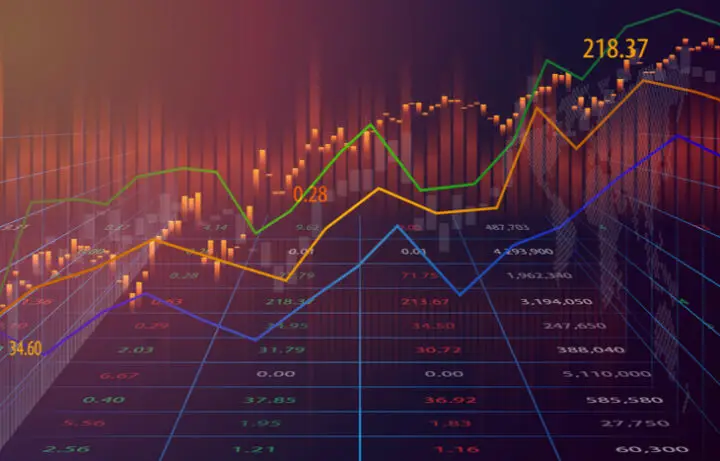Side Hustle Trading: Exploring the World of Part-Time Trading

Trading has always been a realm of the financially savvy, but with the rise of technology and the democratization of information, it’s become accessible to almost anyone. Enter side hustle trading. A side hustle, as defined by Dictionary.com, is “a job or occupation that brings in extra money beyond one’s regular job and main source of income.”
Now, imagine combining that with the dynamic world of trading. This isn’t just about making a quick buck; it’s about leveraging skills, knowledge, and technology to supplement one’s income. In this piece, we’ll explore the nuances of part-time trading, its appeal, and how to get started.
Pro Tip: Always start with a clear understanding of what you’re getting into. Trading, even as a side hustle, requires dedication and knowledge.
The Appeal of Part-Time Trading

The allure of part-time trading is undeniable. It offers a unique blend of flexibility and potential financial growth that few other side hustles can match. Imagine having the freedom to make decisions based on your research, without being tied to a 9-5 routine.
This independence is especially appealing to those who value autonomy in their financial endeavors. Moreover, with the right forex broker, you can tap into global markets, enhancing your opportunities to supplement your income.
This not only helps in achieving financial goals faster but also ensures a balance between trading and other life commitments. The world of trading beckons with its promise of independence, growth, and the thrill of the chase.
Fun Fact: Did you know that the term “side hustle” was first recorded between 2000-2005? It’s a relatively new concept that has gained immense popularity in recent years.
Getting Started

So, you’re sold on the idea. But where do you begin? First, decide on the market that interests you. Whether it’s stocks, forex, cryptocurrencies, or something else, each has its own set of challenges and rewards.
Next, ensure you have the basic equipment – a good computer, reliable internet, and trading software. But perhaps the most crucial aspect is having a clear trading strategy. Without a plan, you’re essentially gambling, and that’s not what trading is about.
Pro Tip: Start with a demo account. It allows you to practice without using real money, giving you a feel of the market dynamics.
Building a Strong Knowledge Foundation
Knowledge is power, especially in trading. Understand the market dynamics, trends, and factors that influence price movements. There are plenty of resources available – books, online courses, webinars, to name a few. Invest time in educating yourself.
And remember, practice makes perfect. Utilize demo accounts to hone your skills without risking your capital.
Fun Fact: Many successful traders spend more time analyzing and learning than actual trading. It’s a continuous learning process.
Risk Management Techniques

Trading is as much about managing risks as it is about spotting opportunities. Set clear risk limits and stick to them.
Understand the concept of leverage and how it can amplify both gains and losses. Diversification is another key strategy. Don’t put all your eggs in one basket; spread your investments across different assets.
Pro Tip: Always set a stop-loss limit. It’s a predetermined price at which you’ll sell a stock to prevent further losses.
Creating an Effective Trading Plan

A well-defined trading plan is your roadmap to success. Start by defining your goals and objectives. Are you looking for short-term gains, or are you in it for the long haul?
Time management is crucial. Choose trading hours that align with your schedule and the market’s active hours. Incorporate clear entry and exit strategies, and always be prepared for different market scenarios.
Fun Fact: Many traders keep a journal, noting down their trades, strategies, and reflections. It helps in self-evaluation and continuous improvement.
Overcoming Psychological Challenges
Trading is not just about numbers; it’s a psychological game. Emotions like greed, fear, and impatience can cloud judgment. It’s essential to maintain discipline, especially during winning and losing streaks.
Celebrate your wins, learn from your losses, and continuously evaluate your performance. Remember, every trader, no matter how experienced, faces losses. It’s how you bounce back that defines your trading journey.
Pro Tip: Meditation and mindfulness exercises can help in staying calm and focused during trading sessions.
Part-Time Trading Strategies

Day trading as a side hustle is not just about jumping into the market and hoping for the best. It’s about having a strategy. Two popular strategies are day trading and swing trading.
- Day trading involves buying and selling within the same day, capitalizing on small price movements.
- Swing trading, involves holding positions for several days or weeks, aiming to profit from short- to medium-term price moves.
Both have their pros and cons, and the choice depends on your risk appetite, time commitment, and market knowledge.
Position sizing and understanding risk-reward ratios are crucial. It’s essential to know how much of your portfolio you’re willing to risk on a single trade and ensure potential rewards justify the risks.
Additionally, traders use both technical and fundamental analysis to make informed decisions. While technical analysis involves studying price charts and using statistical measures to predict future price movements, fundamental analysis involves evaluating a security’s intrinsic value by examining related economic, financial, and other qualitative and quantitative factors.
Pro Tip: Always backtest your trading strategy before applying it in the real market. It helps in understanding its effectiveness and areas of improvement.
Leveraging Technology in Part-Time Trading

In today’s digital age, technology plays a pivotal role in trading. There are numerous trading apps and platforms designed to provide real-time market data, advanced charting tools, and seamless execution of trades. These platforms not only make trading more accessible but also more efficient.
Automation tools, like trading bots, alerts, and algorithms, can help in executing trades based on predefined criteria without manual intervention. They’re especially useful for those who can’t monitor the markets continuously. Additionally, staying updated with market news and developments is crucial. Many apps provide real-time news alerts, ensuring traders are always in the loop.
Fun Fact: The use of algorithmic trading has significantly increased over the years. It’s estimated that over 70% of the trades in major stock exchanges are executed by algorithms.
Real-Life Success Stories
There are countless individuals who’ve achieved success through side hustle trading. These traders come from diverse backgrounds, but they share common traits: dedication, continuous learning, and a disciplined approach.
Their journeys offer valuable lessons, from the importance of risk management to the need for continuous self-evaluation. While their strategies might differ, their commitment to the craft is unwavering.
Legal and Tax Implications

Trading, even as a side hustle, comes with its set of legal and tax implications. It’s essential to report trading income and losses accurately. Different countries have varying tax regulations for traders, and it’s crucial to be aware of these to avoid any legal complications.
For instance, in some jurisdictions, trading profits might be considered capital gains, while in others, they might be treated as income. It’s always advisable to seek professional advice to ensure compliance.
Pro Tip: Keep detailed records of all your trades. It not only helps in analyzing performance but also simplifies tax reporting.
Balancing Your Side Hustle Trading

While trading can be exciting and financially rewarding, it’s essential to prevent burnout and exhaustion. Set realistic expectations and understand that losses are part of the journey.
It’s crucial to have a work-life balance and ensure that trading doesn’t consume all your time and energy. Remember, it’s a side hustle, not your entire life. Incorporate trading into your overall life plan, ensuring it complements, not complicates, your lifestyle.
The Future of Part-Time Trading

The world of trading is continuously evolving. With advancements in technology, we can expect even more sophisticated trading tools in the future.
Global economic events will always influence trading opportunities, but with increased accessibility to global markets, traders now have a broader playground. Moreover, the trading community is becoming increasingly diverse, with people from all walks of life participating, enriching the ecosystem with varied perspectives.
Wrapping Up
The world of side hustle trading offers immense opportunities. With dedication, the right knowledge, and a disciplined approach, it’s possible to navigate the markets successfully.
Remember, it’s a journey of continuous learning and adaptation. Embrace the challenges, celebrate the wins, and always strive for growth. Here’s to exploring the world of part-time trading with confidence and zeal!
